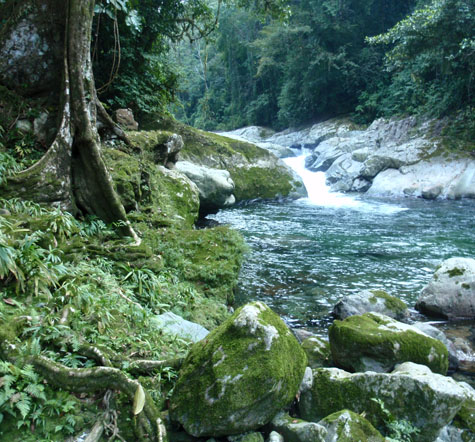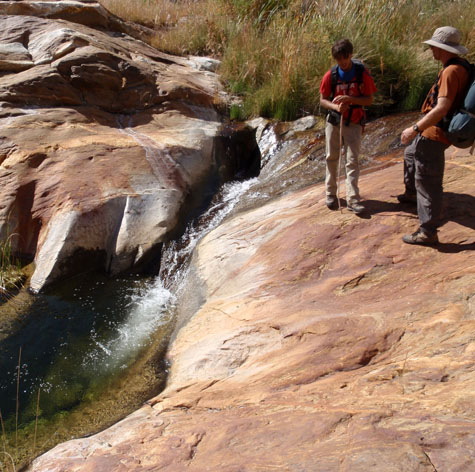| Quantifying the Climatic Control on Erosional Efficiency |
  |
Project Summary
Personnel: Matthew Rossi Roman DiBiase Surprisingly little is known quantitatively about the climatic control on erosion rates at millennial or longer timescales. Though details vary, landscape evolution models all predict a positive, monotonic relationship between river discharge and erosion rate. However, little data exists to support this fundamental expectation at the landscape-scale due to the difficulty in isolating variables in large-scale natural systems. Indeed, some of the most convincing data available shows strong relationships between erosion rate and relief, but little or no significant correlation between mean annual precipitation and erosion rate. Our work aims to test the hypothesis that mean annual precipitation does, in fact, strongly influence the efficiency of erosion. That is, we expect that the functional relationship between relief and erosion rate will change systematically from arid to increasingly humid catchments underlain by the same rock type. Our approach will be to use well-established detrital cosmogenic radionuclide methods to measure millennial-scale erosion rates for a suite of catchments in six field sites distributed in different climatic settings, but with similar ranges of relief in similar granitoid bedrock. These data will allow us to build relations between topographic metrics and erosion rates for sites with mean annual precipitation ranging from ~0.2 to ~3.0 m/yr. By comparing across sites, these data will allow us to quantify the relationship between mean annual precipitation and erosion rate. Few problems are more fundamental to the study of geomorphology than the relationship between climate and erosion. The role of climate as a driver for erosion and sediment transport is important to surface processes that act over timescales ranging from individual storms to millions of years. Consequently, the research questions pursued here have direct implications for problems of immediate societal relevance including climatic impacts on reservoir sedimentation rates, natural hazards, and rates of soil erosion. Not surprisingly, climate’s role in surface processes is equally central to fundamental problems in allied fields like geochemistry, sedimentology, tectonics, and geodynamics. In geochemistry, there is a great deal of interest in how climate controls silicate weathering rates, a key feedback in the carbon cycle: silicate weathering extracts atmospheric carbon dioxide and thus acts to cool the planet. Recent data shows chemical weathering rates can be strongly modulated by physical erosion rates. As such, the question of how strongly climate controls physical erosion rates becomes directly relevant to the carbon cycle and global climate. In sedimentology, geologists studying the sedimentary record have long faced a difficult challenge in isolating climatic from tectonic controls on detrital and chemical fluxes into depositional basins. At its core, this requires at least an accurate qualitative (preferably quantitative) understanding of the degree to which climate influences erosion rates. And lastly, in tectonics and geodynamics, there is vigorous inquiry into the potential for dynamic two-way interactions between climate and tectonics on million-year timescales. The expected, but unproven, link between climate and erosion rate is the cornerstone of this extensive literature. |
|
Climate
&
Erosion
|
Previous Projects |